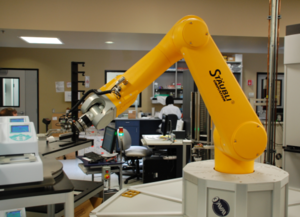GCSE Design and Technology
From DT Online
The content for design and technology GCSE
Introduction
- The GCSE subject content sets out the knowledge, understanding, skills and educational outcomes common to all specifications in Design and Technology.
- The GCSE specifications in Design and Technology should enable students to understand and apply iterative design processes through which they explore, create and evaluate a range of outcomes. They should enable students to use creativity and imagination to design and make prototypes (together with evidence of modelling to develop and prove product concept and function) that solve real and relevant problems, considering their own and others’ needs, wants and values. GCSE specifications should also provide opportunities for students to apply knowledge from other disciplines, including mathematics, science, art and design, computing and the humanities.
- Students should acquire subject knowledge in Design and Technology that builds on Key Stage 3, incorporating knowledge and understanding of different materials and manufacturing processes in order to design and make, with confidence, prototypes in response to issues, needs, problems and opportunities. Students should learn how to take design risks, helping them to become resourceful, innovative and enterprising citizens. They should develop an awareness of practices from the creative, engineering and manufacturing industries. Through the critique of the outcomes of design and technology activity, both historic and present day, students should develop an understanding of its impact on daily life and the wider world and understand that high-quality Design and Technology is important to the creativity, culture, sustainability, wealth and well-being of the nation and the global community.
Aims and objectives
The study of Design and Technology seeks to prepare students to participate confidently and successfully in an increasingly technological world; and be aware of, and learn from, wider influences on Design and Technology, including historical, social/cultural, environmental and economic factors. GCSE Design and Technology specifications must enable students to work creatively when designing and making and apply technical and practical expertise, in order to:
- demonstrate their understanding that all design and technological activity takes place within contexts that influence the outcomes of design practice
- develop realistic design proposals as a result of the exploration of design opportunities and users’ needs, wants and values
- use imagination, experimentation and combine ideas when designing
- develop the skills to critique and refine their own ideas whilst designing and making
- communicate their design ideas and decisions using different media and techniques, as appropriate for different audiences at key points in their designing
- develop decision making skills, including the planning and organisation of time and resources when managing their own project work
- develop a broad knowledge of materials, components and technologies and practical skills to develop high quality, imaginative and functional prototypes
- be ambitious and open to explore and take design risks in order to stretch the development of design proposals, avoiding clichéd or stereotypical responses
- consider the costs, commercial viability and marketing of products
- demonstrate safe working practices in Design and Technology
- use key design and technology terminology including those related to: designing, innovation and communication; materials and technologies; making, manufacture and production; critiquing, values and ethics.
Subject Content
Learning outcomes and content coverage required for GCSE specifications in Design and Technology can be found in the UK Government Guidance: GCSE design and technology.
